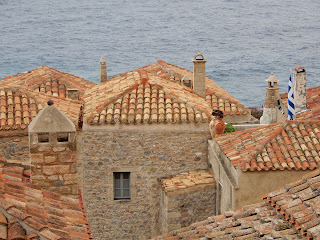Saturday, November 16, 2019
Thursday, November 14, 2019
Mycenae
Mycenae was one of the major centres of Greek civilization in the second century BC. It had been inhabited since the Early Neolithic period (5000 4000 BC)
The period of Greek history from about 1600 BC to about 1100 BC is called Mycenaean when it was at its peak. In 1350 BC, the citadel and lower town had a population of 30,000.
Today, tourists go there to see the famous gate to the citadel called the Lion Gate.
In 1841 Greek archaeologist found and restored it.
In the 1870s other excavations in the citadel revealed many treasures from graves that are housed in the museum nearby.
The period of Greek history from about 1600 BC to about 1100 BC is called Mycenaean when it was at its peak. In 1350 BC, the citadel and lower town had a population of 30,000.
Today, tourists go there to see the famous gate to the citadel called the Lion Gate.
In 1841 Greek archaeologist found and restored it.
In the 1870s other excavations in the citadel revealed many treasures from graves that are housed in the museum nearby.
Archeological Museum in Napflion
I love seeing what the ancestors were making BCE.
And here they all are, out of context and being examined by us in this post modern, technological age, and we are still swooning over their beauty.
The glassware above is around 500BC!!!
These sisters above are from 7th - 6th century BC!!!!!!!!!!!!!!
Jewellery from the 1500 - 1400 BCE
Wednesday, November 13, 2019
Tuesday, November 12, 2019
Monday, November 11, 2019
The Church of St. Sophia, in the grounds of the ruined castle of Methoni
Within the grounds of the castle of Methoni is the the Byzantine church of St. Sophia built in 1714.
Methoni Castle near Pylos
The Castle of Methoni is a medieval fortification in the port town of Methoni. It was built by the Venetians in the early 1209 on a rocky promontory. It is among the largest ones in the Mediterranean. The area that it covers is huge - nearly 38 hectares
It leads down to the sea.
On various parts of the fortification there are Venetian emblems with the winged lion of St. Mark and inscriptions.
I has attached to it this building (below) that served as a prison and place of executions during the Turkish Occupation, was built in 1500 and is connected to the Sea Gate of the castle with a paved tiny road.
The aerial image below is from the web.
The images bwlow are mine: it is hard to get an idea of the scale.
Subscribe to:
Posts (Atom)
























































